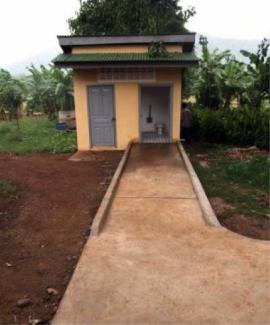Settlement
Spontaneous settlements are other contexts where the situation of women, men, girls and boys with disabilities needs to be considered, as many of the most at risk groups are often found among the population in these settlements. The priority is to improve safety, accessibility and access to services, and to find alternative shelters for persons with disabilities, women and men, and others most at risk, while preserving or building support networks.
Upgrades of spontaneous settlements
- Identify where persons with disabilities live, paying special attention to where isolated women and children live;
- For optimal planning, join persons with different types of disabilities for a walk through the settlement. This will help to identify barriers and also understand community attitudes. The outcomes will help to plan the interventions for improving the settlements, for example:
- Access to WASH facilities;
- Awareness campaigns;
- Cash-for-work involving persons with disabilities;
- Upgrade pathways or remove other obstacles along main circulation routes (for example simple handrails can be constructed from rope or bamboo) to make sure they are accessible and wheelchair user-friendly;
- Improve lightning and general safety measures etc.
- Consult persons with disabilities living in inaccessible locations for possible relocation to a different area or alternative shelter outside the settlement. Avoid separating persons with disabilities from their support networks, especially women, isolated children and those with intellectual or psychosocial disabilities.

© Handicap International.
Sources
IFRC, CBM and Handicap International. All Under One Roof. Disability-inclusive shelter and settlements in emergencies, IFRC 2015.
Handicap International. How to build an accessible environment in developing countries. Manual no 1. Introduction and Accessibility Standards. Cambodia, 2008